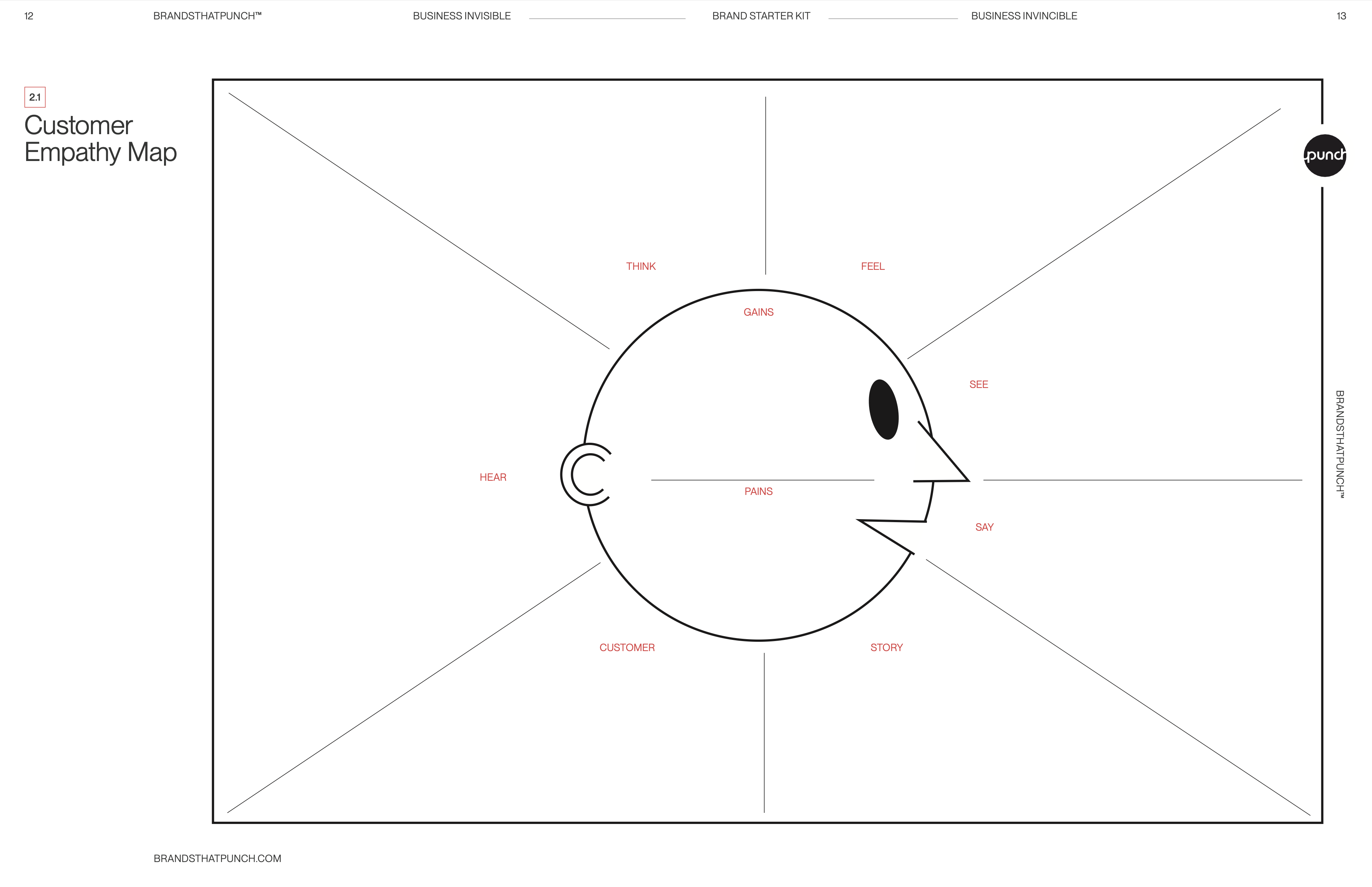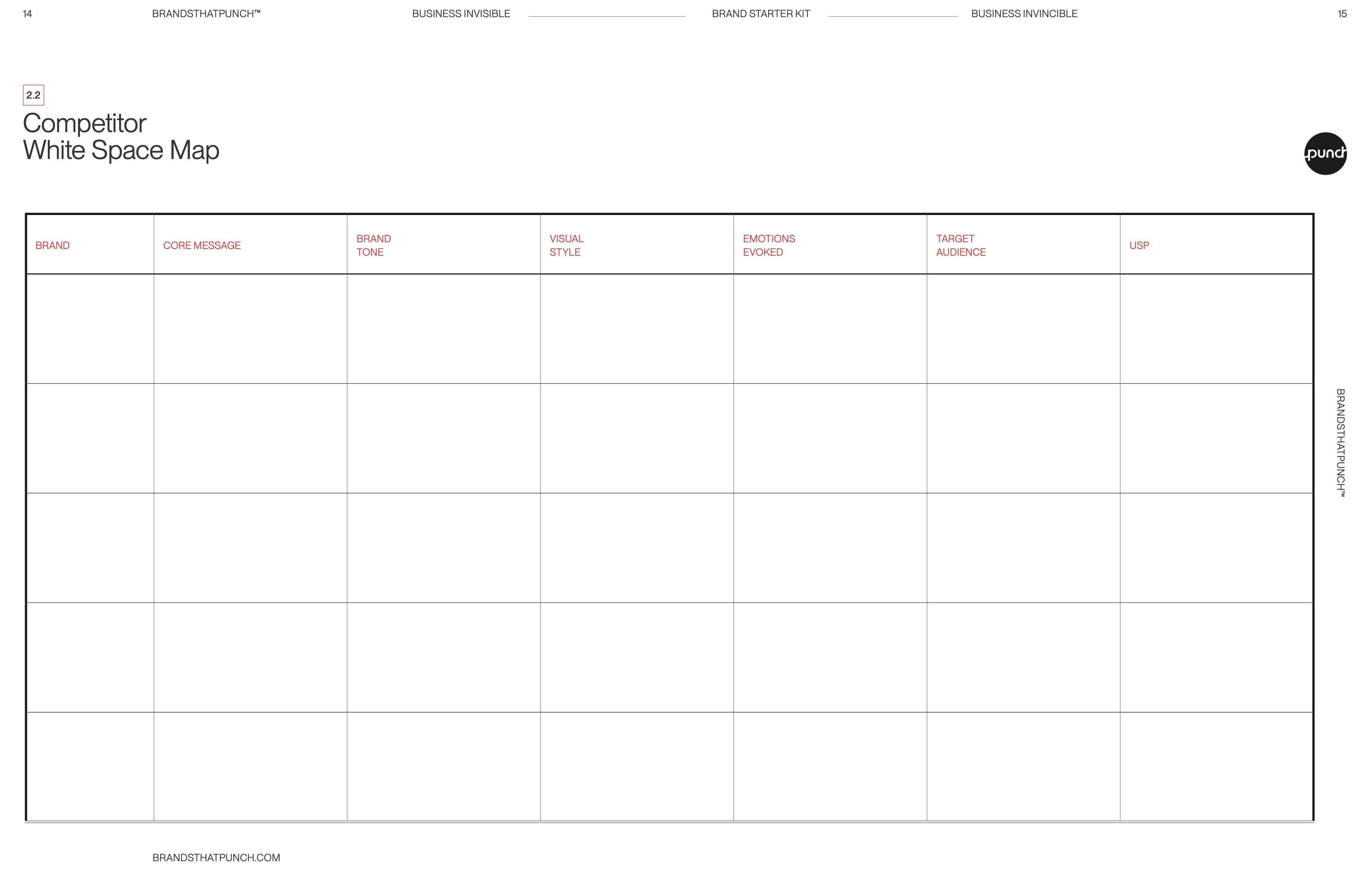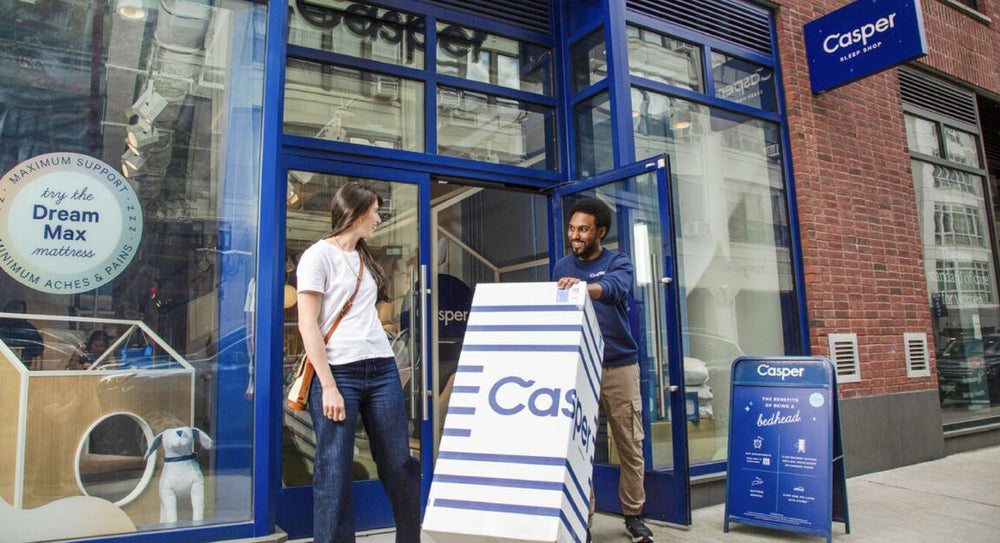Insight — The hidden driver of growth
If your small business has a great product but growth feels stalled, the issue likely isn’t your marketing, it’s your positioning. This article shows you how to use insight, empathy, and white space to sharpen your brand message and reconnect with your audience.
— Learn how to map what your customers really want using empathy frameworks
— Discover gaps in your market where your brand can truly stand out
— Use a step-by-step positioning formula to clarify your message and drive growth
You’ve been in the game for a while. You’ve built something real. You’ve got a solid product or service, loyal customers, and a reputation you’ve worked hard to earn. But lately? Growth feels slower.
Marketing’s running. You’re posting consistently. Maybe you’ve even invested in ads or hired outside help. And yet, the message isn’t landing like it used to. The momentum just isn’t there. Here’s the frustrating part:
You know your offer delivers. You’ve seen the results. So why does it feel like you're shouting into the void?
Here’s a hard truth many small business owners face, even the seasoned ones. You don’t have a marketing problem. You have a positioning problem.
“Positioning is not what you do to a product. It’s what you do to the mind of the prospect.”
— Al Ries & Jack Trout, Positioning: The Battle for Your Mind
The growth plateau no one talks about
This isn't just a startup issue. Established small businesses hit this wall too, often when trying to move beyond their initial word-of-mouth base.
In the early days, growth often comes from personal networks, hustle, and referrals. But to reach your next chapter, to scale meaningfully, that approach stops being enough. That’s when you hit the growth plateau.

And it’s not because your team isn’t working hard. It’s because your message isn’t working hard enough for you. You’re doing the right things, but it’s not converting. Why? Because your audience doesn’t quite get it anymore.
They don’t clearly see:
— What makes you different
— Why they should care
— What specific value you bring them today
And when that happens? They move on. Not because they didn’t need your solution. But because your brand didn’t communicate it in a way that connected.
Messaging isn’t just words,
it’s perception
The biggest misconception we see? Businesses assume their marketing isn’t working because the words aren’t catchy enough. But that’s not it. The problem isn’t the words. The problem is the positioning behind the words.
Brand Positioning is the space you own in your customer’s mind.
It’s why they choose you over the competitor down the street or in the next browser tab. Without strong positioning, everything feels harder:
— You spend more to acquire each customer
— You get asked to lower your price
— You lose sales to brands that “look” more aligned, even if your product is better
But with sharp, insight-driven positioning?
— Customers instantly get what you offer
— They feel like you “get them”
— Your marketing starts doing the heavy lifting
This isn’t just about polishing your pitch. It’s about shifting perception.

Why most businesses miss the mark
Most business owners think they’ve already done the positioning work, they’ve got a slogan, a logo, a website. But real positioning runs deeper.
The truth is: Most businesses skip the insight that makes positioning work. They lead with features instead of feelings. With credentials instead of relevance. With industry jargon instead of human truth. So what happens?
They blend in. They sound like everyone else. They lose attention before they’ve had a chance to earn it. What’s missing is a clear, emotional, surprising insight, one that reframes how people see the problem you solve.
Let’s fix that.
The Smart Brand Builder:
Insight-Led brand positioning
This isn’t just for startups or founders.
This is for any business that feels like their messaging no longer matches their growth goals. Whether you’re a local business trying to stand out in a crowded market, or a digital service scaling beyond referrals, this is where real clarity begins.
This is 'Session Two' of the five-session system we use to build bold, high-performing brands.
Each session builds on the last, and together, they unlock the clarity, consistency, and confidence your brand needs to scale. In this session, we focus on sharpening your Brand Positioning Statement using three proven frameworks:
— Customer Empathy Maps
— Competitor White Space Analysis
— The Brand Insights
This isn't theory. It’s a practical system that gets you out of the fog, and into a position of real, relevant authority.
Framework 1: Customer Empathy Maps
What it is:
A tool to deeply understand your customer, beyond demographics, beyond job titles, and far beyond assumptions.

Why it matters:
ou can't build sharp positioning without understanding what your customer is really feeling. Most small businesses rely on surface-level buyer personas: age, income, maybe a job title. But those don’t uncover what truly drives decisions. Empathy maps go deeper. They help you capture:
— What your customer thinks and feels
— What they see and hear in their environment
— What pains they experience
— What goals and gains they seek
This isn't just a marketing exercise, it's business-critical insight. Because positioning starts with empathy. When you understand what frustrates your customer, what motivates them, and what they long for, you can speak to them in a way that makes them feel seen and understood.
How to do it:
Start by reviewing:
— Customer support conversations
— Google or Yelp reviews (yours and competitors')
— Social comments and community posts
— Testimonials and interviews
Look for patterns in their language. What do they say they hate? What do they keep wishing for? Where do they feel stuck? When you can finish their sentences, they’ll feel like you’re reading their mind. That’s the first step to standing out.
Framework 2: Competitor White Space
What it is:
An audit of your competitive landscape to find the gaps — the places where your brand can say something meaningfully different.

Why it matters:
If your competitors are all shouting the same thing, and you join that same chorus, customers tune out. Especially in industries where marketing often sounds like it was written by the same person for 10 different brands. This framework helps you ask:
— What are others not saying?
— Where is the customer not being served, emotionally or practically?
We’re not talking about differentiating on product features alone. Real white space often exists in positioning, not product. It could be how you frame the problem, the language you use, or the emotional angle you lead with.
How to do it:
Create a simple audit spreadsheet. For each of your top 5 competitors, track:
— Their main headline or value proposition
—Their tone of voice and visual identity
— Their tone of voice and visual identity
— Any unique claims or angles
— The emotional appeal (if any) they’re using
Then ask:
— Are they all emphasizing the same things?
— Is the messaging cold or transactional?
— Are they missing the human story behind the purchase?
From here, you’ll begin to see your opening, the message only you can own.
Framework 3: The Brand Positioning Framework
What it is:
A structured formula to turn all your insight into a single, clear, compelling Brand Positioning Statement.
Why it matters:
This is the payoff. After listening to your customers and scanning your competitors, this framework distills your learnings into a message that feels obvious and powerful, like it’s always been true, even if it’s never been said.
This isn’t a tagline. It’s the DNA of your brand message. One that guides what you say, how you say it, and where you show up.
The 6-step structure:
- Problem: What’s the core frustration or obstacle your customer is facing? Example: “We’ve tried marketing agencies, but nothing’s working.”
- Reframe: How can you help them see the problem differently? Example: “It’s not your marketing — it’s your positioning.”
- Context: What market or cultural dynamics are adding pressure or noise?Example: “Every competitor sounds the same — and customers are overwhelmed.”
- Insight: What’s the deeper emotional truth they feel but don’t say? Example: “I feel invisible. Like no one gets what I offer.”
- Aspiration: What does your customer truly want — practically and emotionally? Example: “I want clarity and momentum. I want my brand to stand out and attract the right people.”
- Positioning Result: Now combine those insights into a statement that defines your edge. Example: “We help businesses sharpen their brand positioning so they finally connect, convert, and grow — without sounding like everyone else.”
Done right, this framework becomes the springboard for every message you create, from your homepage to your elevator pitch to your sales deck.

Case study: How Casper used insight to outmaneuver giants
Before Casper, the mattress industry was a maze of foam types, coil counts, jargon, and high-pressure showroom sales. Brands were competing on specs. Shoppers were overwhelmed. Nobody stood out.
Casper didn’t invent a better mattress. They invented a better buying experience, by starting with insight.
The Insight Process in Action:
→ Problem: People dreaded shopping for a mattress. It felt like buying a used car, full of upselling, confusion, and zero transparency.
→ Reframe: It wasn’t just about better sleep, it was about eliminating the pain and pressure of the purchase process.
→ Context: Traditional mattress retailers were locked into in-store sales and relied on confusing model lines, limited return policies, and sales tactics people no longer trusted.
→ Insight: Shoppers weren’t just tired, they were tired of being sold to. What they really wanted was a smarter, easier way to buy a mattress without all the friction.
→ Aspiration: “I want to make a good decision without stress. I want comfort without complication.”
→ Positioning Result: “The mattress that shows up at your door in a box.”
That single line disrupted an entire industry. It told a clear story: No more showrooms. No more shady salespeople. Just comfort, convenience, and control.
Casper made the buying experience the hero, not just the mattress. That’s what happens when insight shapes your brand positioning.

Where most small businesses go wrong
Even with great products and good intentions, many businesses unintentionally weaken their own positioning. Here are three of the most common pitfalls we see:
1. Skipping the research
Let’s be honest, research feels like a luxury when you're busy running a business. But insight doesn’t come from your head. It comes from your customer’s world. Too often, business owners rely on gut instinct or guesswork. They assume they already know their audience. But customers evolve, and what you “knew” two years ago may no longer be true.
You don’t create your brand message. You uncover it.
That happens through structured listening: conversations, reviews, forums, interviews. Without it, you’re speaking at your audience, not with them.
2. Confusing data with insight
Saying “our audience is 65% female” is data. Saying “our audience feels overwhelmed trying to juggle business and family — and wants solutions that simplify their day” is insight. Positioning rooted in demographics misses the emotional driver. And emotions are what drive decisions.
People don’t buy products. They buy relief, progress, identity, and belonging.
If your positioning doesn’t speak to that, you’re leaving connection on the table.
3. Relying on category clichés
Every industry has a comfort zone, overused language and safe claims like:
- “We care about quality.”
- “Driven by innovation.”
- “Your trusted partner.”
These statements might be true, but they’re forgettable. They could apply to anyone, and that’s the problem. Great positioning doesn’t describe your business.
It expresses what only your brand can say.
The clearer and more emotionally specific you are, the more memorable you become.
Why insight-driven positioning works:
Still wondering? You’re not alone, but the evidence is clear: businesses that lead with insight outperform those that don’t.
Here’s what the research shows:
72% of new products fail to differentiate meaningfully in the market.
— Harvard Business School
Only 14% of customers can explain why they choose one brand over another in crowded categories.
— Havas Meaningful Brands Report
And 64% of brands still lead with features, not real problems or aspirations.
— Forrester
This gap between what brands say and what customers actually care about? That’s the insight gap, and it’s directly tied to your growth ceiling.
The experts agree:
“In a sea of sameness, the brand with the clearest, truest insight wins.”
— Smart Brand Builder™ Methodology
“Insight is not a creative spark. It’s a customer truth that reframes everything.”
— Bain & Company, Brand Playbook
In today’s noisy world, it’s not the loudest brand that wins. it’s the clearest one. And clarity starts with insight.
Final thought:
You Don’t Need a Rebrand. You Need a Reframing.
If growth feels stuck, the answer isn’t more ads. Or a trendier logo. Or louder marketing. It’s clarity. The kind of clarity that makes your brand instantly resonate, not just look good. The kind that moves your business from one of many to the one they remember. That kind of clarity starts here, with insight-driven brand positioning.
Whether you’re a local business, a scaling service provider, or a product-based company feeling lost in the noise, sharpening your position is how you cut through and scale up.
You already have the product. You already have the proof.
Now you need the positioning.
New here? Catch up on the 'Smart Brand Builder' system
This blog is part of the Smart Brand Builder, a proven 5-session system designed to help small businesses build bold, resilient brands that connect and scale.
If you’re just joining us at Session Two, we recommend starting from the beginning:
Session One: Vision & Clarity
Discover how to align your business vision, values, and audience before you touch design or messaging.
Read Session One
Each session builds on the last — giving you practical tools, not fluff, to create a brand that works as hard as you do.
What’s next?
Download the Smart Brand Builder Workbook
— It’s free
— It’s practical
— And it’s built for businesses like yours

Connecting
brands to
customers
for 19 years
2006 - 2025
N —
Nineteen years ago, we started with one mission: build brands that break through.
I —
It wasn’t about being the biggest, but the boldest
N —
Names, narratives, and identities, crafted to punch above their weight.
E —
Every project, a new challenge. Every brand, a new fight worth showing up for.
T —
Through shifts and time zones, we stayed true with clarity, speed, impact.
E —
Egos aside, it’s always been about the work—and the people brave enough to back it.
E —
Every client, partner, and teammate—past and present—shaped this journey.
N —
Now, 19 years in. This isn’t a milestone. It’s a launchpad.




